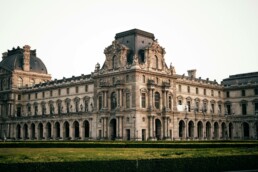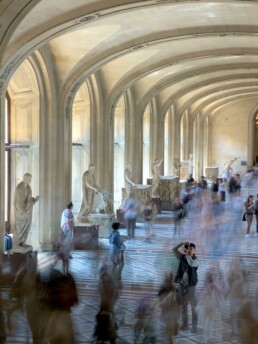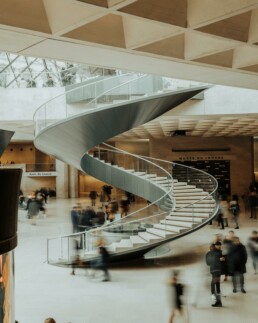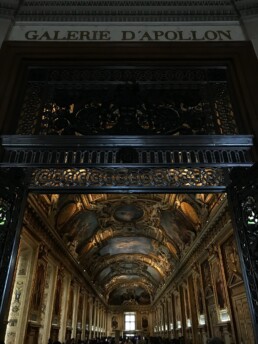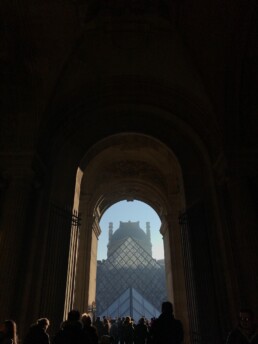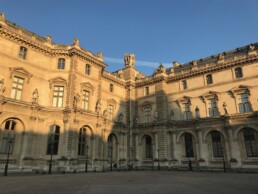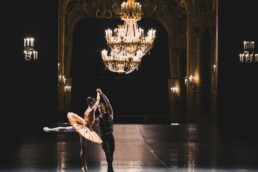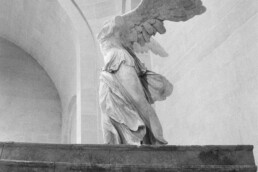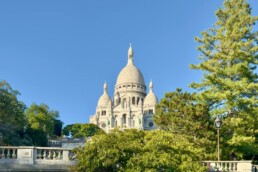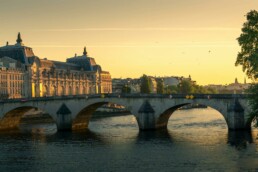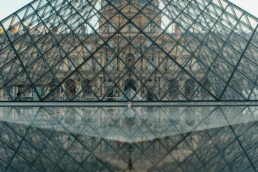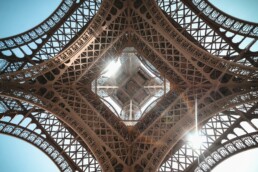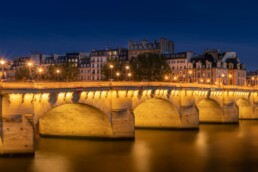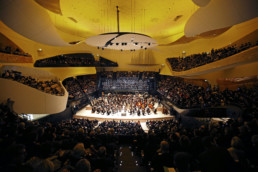The massive and imposing presence of the Louvre at the heart of Paris cannot simply be reduced to a tangle of stones and bricks. This monument is the reflection of human ambition, a space where art and history mingle, dispute, and finally reconcile. The Louvre is the expression of a desire, a place where gazes and minds intersect, a theater where, for centuries, the grand comedy of humanity has been performed.
The genesis of the Louvre dates back to 1190, when Philippe Auguste decided to build a fortress to protect Paris. This stronghold, with its towers and keep, was both a symbol of power and a response to the fear of invasion. But the history of the Louvre, as we know it today, truly begins during the Renaissance when François I, a genuine patron of the arts, transformed this military bastion into a sumptuous royal residence. The Philosopher King, enamored with culture and humanism, brought in Italian artists, including the famous Leonardo da Vinci, who crossed the Alps with some of his most precious works, among which the enigmatic Mona Lisa.
I remember my first visits to the Louvre, those moments when, walking through the immense galleries, I felt the weight of centuries and civilizations. Every painting, every sculpture seemed to whisper a story, a quest for meaning. There was a strange alchemy between the past and the present, between beauty and the anguish of the human condition. The visitors themselves were caught in this whirlwind of reflections and emotions, wandering like shadows among the masterpieces of art.
Ah, the anecdotes that punctuate the history of the Louvre! It is said that Napoleon Bonaparte, during his coronation in 1804, placed the imperial crown on his own head in front of David’s monumental painting, “The Coronation of Napoleon”. This gesture, filled with pride and defiance, embodied both the grandeur and the vanity of power. Later, during the Revolution of 1830, the Louvre became the theater of violent clashes between insurgents and royal forces. Works of art were damaged, bearing witness to the inherent fragility and violence of human history.
The Louvre is also the story of improbable encounters and crossed destinies. One day, while I was strolling through the Apollo Gallery, I came across a young artist, absorbed in copying a painting by Delacroix. His concentration, almost hypnotic, seemed to detach him from the outside world. We exchanged a few words, and he confided in me that it was there, at the Louvre, that he had found his vocation, his reason for being. This moment, fleeting yet intense, appeared to me as a revelation of the power of art and its ability to transcend existences.
Over time, the Louvre has metamorphosed. The colossal works undertaken under Napoleon III, and later under the Republic, transformed this palace into a universal museum, open to all knowledge and cultures. The inauguration of the glass pyramid in 1989, a work by architect Ieoh Ming Pei, marked a bold turning point in the museum’s history. This striking contrast between classical architecture and transparent modernity symbolized Paris’s determination to remain at the forefront of culture and innovation.
Today, the Louvre continues to fascinate and inspire. Its rich and eclectic collections offer a journey through time and space, an exploration of the many facets of the human spirit. Every visitor, upon entering this sanctuary of art, becomes a witness to history, an actor in the grand human tragedy. Thus, the Louvre Museum is not merely a place of conservation. It is a mirror of the human soul, a space where our hopes, fears, and contradictions unfold
Lire également :
5 November 2024
Through the Veils of Creation: CHANEL and the Paris Opera
5 November 2024
Victory of Samothrace: Eternal Triumph at the Louvre
5 November 2024
The Sacré-Cœur: A Story of Faith and Beauty
5 November 2024
The Gare d'Orsay: A Journey Through Time and Art
5 November 2024
The Louvre Pyramid: Symbol of Architectural Boldness
5 November 2024
The History of the Eiffel Tower: A Memory of Iron and Light
5 November 2024
The History of the Pont Neuf: A Parisian Reminiscence
10 December 2017




